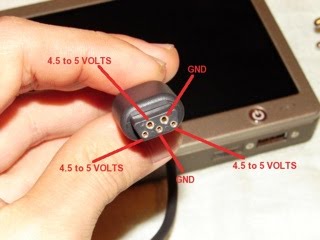Oqo 01 power adapter pinout
Friday, February 3rd, 2017I got a nearly unused Oqo 01+ a few years ago for my vintage computer collection. You know, because it has “rare” Transmeta Efficeon cpu in it. As the original power supplies are apparently prone to fail, it already came without a power supply and I had to always use the lab supply on my desk (don’t ask, just the usual computer scientist office desk ;-)
Back in the day I found a bloodspot.com post form Ekawahyu Susilo, were he measured the pins - however, given the usual bitrot in the interwebs the post is now gone, and I peeled the most useful photo out of the archive.org to archive it prominently here as well:

(1) is VCC1, (2) is GND, and (3) is VCC2. Pin (4) is connected to GND and pin (5) is connected to VCC2. As far as I have found, VCC1 (5-6V?) is used for charging, while VCC2 (may be better lower at just 5V?) is used to directly run the Oqo, …
Update: now with video! ;-)

